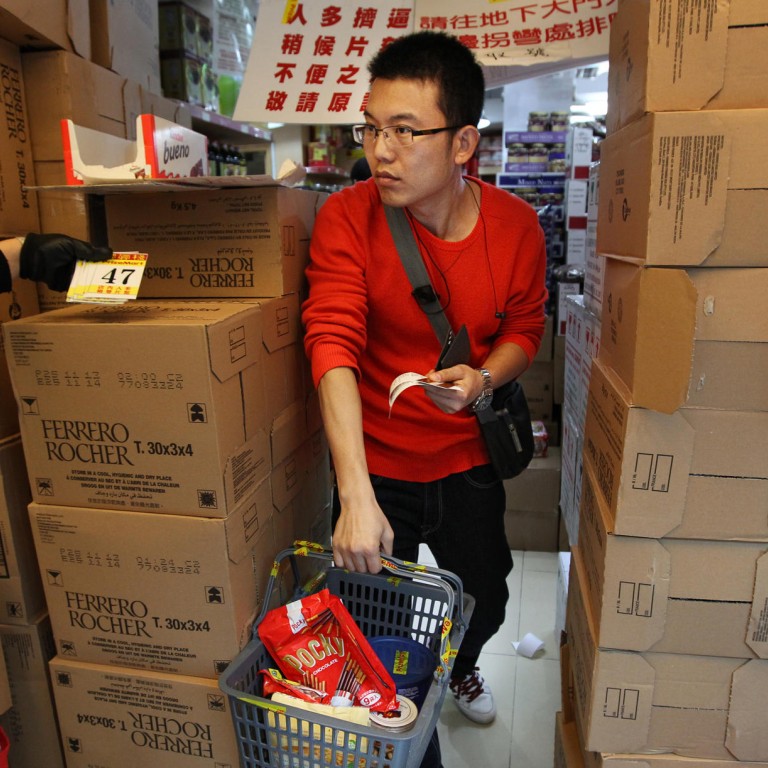
Once-tranquil towns being transformed by major shopping malls for tourists
New Territories residents bemoan the effect of tourism in the final part of our series on capacity
Residents in the New Territories have expressed frustration over what they see as the transformation of their communities into major shopping districts, with malls increasingly geared towards the surging number of tourists flooding into the city.
With the government forecasting 100 million visitors a year by 2023, research by the shows 60 per cent of retailers with outlets at Causeway Bay's Times Square - one of the most popular malls with mainland tourists - have extended their presence to Sha Tin, and some to Tuen Mun.
Can residential areas in New Territories handle mainland tourists?
A few years ago such middle-market and high-end branded retailers were a rare sight outside downtown areas, but mainlanders opting to do their shopping in the new towns of the New Territories have lured them north.
"Tuen Mun is more convenient. I needn't travel all the way to Kowloon or Hong Kong Island, where there are too many people," said Li Pingping, who lives in Shenzhen's Nanshan district near the Shenzhen Bay checkpoint, just 20 minutes away from Tuen Mun Town Plaza by bus.
Sha Tin's New Town Plaza, a half-hour train ride from the Lo Wu checkpoint, is similarly busy at weekends.
Shoppers from across the border can be seen pouring into both malls equipped with trolleys, suitcases and a lot of cash, in search of products that used to be exclusive to downtown areas, as well as daily necessities.
Figures show New Town Plaza has recorded successive annual increases in attendance, a phenomenon some residents say has affected their quality of life.
"It is so crowded here that I need to wait for an hour before being seated in a restaurant," said Terry Ma, a local resident at the mall with his daughter. "But there aren't a lot of other choices. Local shops are getting further away."
Tuen Mun has fast been going the same way since the opening of the Shenzhen Bay checkpoint seven years ago. The cluster of shops near the town centre is home to about a third of the retailers with stores in Times Square.
"I feel like Tuen Mun has become another Causeway Bay - a lot of gold shops and big crowds every weekend," said Tung Lik-yan, 78, who has lived in the town for three decades. Fellow resident George Chan Ka-ho said: "The proportion of mainlanders to locals here is even higher than in Causeway Bay - perhaps 80 per cent to 20 per cent."
Last year residents took to Facebook to protest against a plan by the town's latest mall, V City, to lay on 500 shuttle buses to the border a day.
"When we go to the town centre nowadays it's full of mainlanders," the Facebook page's organisers wrote. "Many Tuen Mun people's memories have been washed away by money."
The mall last year said its priority was serving local residents. It said it expected a turnout of 50 million shoppers for the year.
The contribution of cross-border shoppers to the city's tourism revenues has been steadily rising. Mainlanders accounted for 70 per cent of the total HK$186 billion spent by all overnight visitors to the city in 2012, according to the Tourism Board. Each mainland visitor spent on average HK$8,565 per trip, up from HK$4,355 in 2004.
Joseph Tung Yao-chung, executive director of the Travel Industry Council, said amid tensions between tourists and locals, the government should consider freeing up land for retail space even closer to the border.
"The government should consider setting up border shopping towns near the mainland to direct more of these tourists away from the city centre," Tung said.
Developing Lantau Island should also be a priority, he said, given that the Hong Kong-Zhuhai-Macau bridge, which will extend from a nearby artificial island northeast of Hong Kong's airport, is due to open in 2016.

